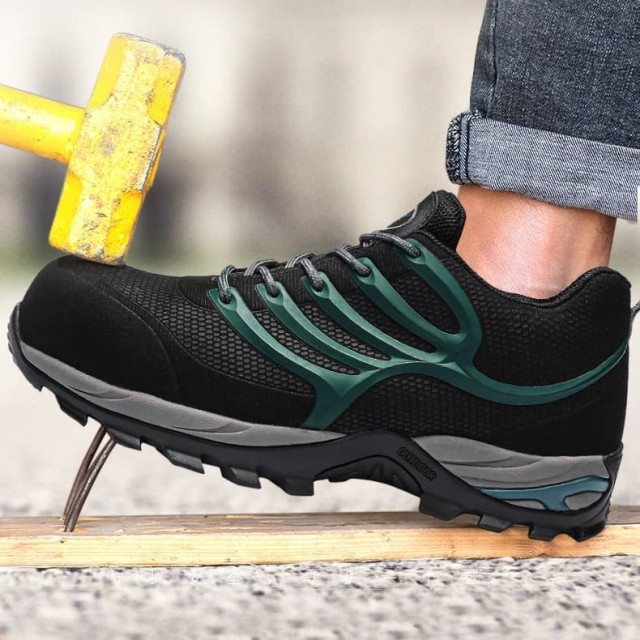When choosing safety footwear, the debate between composite and steel toe options often centers on immediate protection. But what happens after the impact? Long-term durability, safety performance, and cost efficiency are critical factors that deserve equal attention. This article examines how composite materials outperform steel in sustained impact resilience, industry-specific advantages, and lifecycle value.
Composite vs. Steel Toe Safety Shoes: A Lifespan Perspective
Material Science Behind Impact Reactions
Composite toes, made from carbon fiber, Kevlar, or fiberglass, absorb and disperse impact energy differently than steel. Research shows these materials rebound to their original shape after compression, whereas steel tends to dent permanently. This "memory" effect means composite shoes maintain protective integrity over repeated impacts.
Steel toes, while initially robust, can develop microfractures or deformations after heavy blows. These subtle changes may compromise future safety—a risk composite materials mitigate through elastic recovery.
How Denting vs. Rebound Affects Safety Over Time
- Steel Toes: Once dented, steel loses structural uniformity, creating weak points. In extreme temperatures, these imperfections may worsen (e.g., brittleness in cold or accelerated corrosion in humidity).
- Composite Toes: Their non-metallic composition avoids conductivity issues and resists environmental degradation. For electricians or workers in corrosive settings, this translates to consistent protection.
Maintenance and Replacement Cost Analysis
Composite shoes often outlast steel counterparts due to:
- No corrosion risk, reducing premature replacements in wet/salty environments.
- Lighter weight, decreasing wearer fatigue and sole degradation.
- Lower lifetime costs: While initial prices may be comparable, composites’ durability reduces frequency of replacement.
Industry Applications and Real-World Performance
Case Study: Composite Shoes in High-Impact Manufacturing
In automotive assembly plants, composite toes are increasingly preferred. Workers report:
- Fewer replacements: Composite soles withstand dropped tools and machinery collisions without losing protective capacity.
- Enhanced comfort: Reduced weight (up to 30% lighter than steel) improves mobility during long shifts.
Steel Toe Limitations in Cold or Corrosive Environments
- Temperature sensitivity: Steel conducts heat/cold, risking discomfort or frostbite in freezing conditions. Composite materials insulate better.
- Corrosion: Oil, chemicals, or seawater accelerate steel’s breakdown. Composite toes resist these elements, making them ideal for oil rigs or marine work.
Key Takeaways for Decision-Makers
- Prioritize rebound resilience if long-term impact protection matters (e.g., warehouses, logistics).
- Choose composites for harsh environments (cold, wet, or electrically hazardous zones).
- Steel remains viable for single-impact risks (e.g., construction sites with rare but extreme hazards).
Upgrade Your Safety Footwear Strategy with 3515
As a trusted manufacturer for distributors and bulk buyers, 3515 delivers high-performance composite and steel toe footwear tailored to your industry’s demands. Our expertise ensures your workforce gets durable, cost-effective protection—contact us to explore custom solutions today.
Related Products
- Customizable Anti-Smash Safety Boots for Wholesale & Private Label Manufacturing
- Athletic Safety Shoes with Dial Closure & Steel Toe for Wholesale & Custom Manufacturing
- Wholesale Customizable Suede Safety Boots - Puncture-Proof with Velcro Closure
- Wholesale Customizable Safety Boots Durable & Protective Footwear Manufacturing
- Durable Steel Toe Safety Boots Wholesale & Custom Manufacturing
Related Articles
- Matching Men’s Work Shoe Safety Technologies to Workplace Hazards
- Steel-Toe vs. Composite-Toe Boots: How to Choose the Right Safety Footwear for Your Job
- How Steel Toe Shoes Meet Safety Standards and Prevent Workplace Injuries
- Steel Toe Work Boots: Balancing Safety and Comfort for Demanding Jobs
- How to Choose Steel Toe Shoes That Balance Safety and Comfort



















